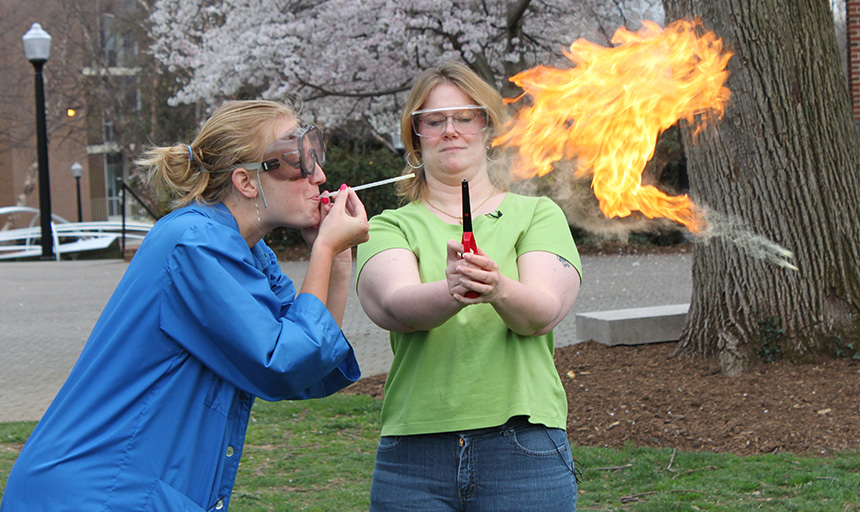Roanoke research, exhibit connect dragons and folklore
June 23, 2016

It began with a routine trip to dig for rock samples at a quarry in West Virginia.
Dr. DorothyBelle Poli, associate professor of biology at Roanoke College who often visits the Boxley Materials Co. quarry in Beckley, West Virginia, unearthed fossils with unique shapes during one of her trips. She said they resembled a mythical dragon- complete with skin, eyes, legs and clawed feet.
This initial discovery led to questions and research and eventually, Dr. Lisa Stoneman, an assistant professor of education and folklorist at Roanoke, joined in. Along with Poli, Stoneman enlisted some Roanoke students to help map fossil findings with the sites of folktales in parts of the United Kingdom.
The growing group formed the Dragon Research Collaborative with a quest to answer this question: Did plant fossils influence dragon lore?
The culmination of three years of this research by Poli and Stoneman, along with a fluctuating group of at least 15 Roanoke students at a time, comes together on July 1. "Hunting Dragons: Origins," a natural history-art exhibit at the Wilson Hughes gallery in downtown Roanoke, opens July 1 from 5 to 9 p.m. as part of the city's Art by Night series.
The monthlong exhibit creates the dragon by blending folktales, art, science and culture from around the world.
It will display the work of numerous Roanoke students and faculty across academic disciplines. Alongside Poli, Stoneman and students' fossils and folklore maps research, the exhibit will showcase narrative poetry about dragons by Dr. Melanie Almeder, an English professor, and a recording by Modern Languages professor Dr. Jim Ogier reciting the word for "dragon" in at least nine different languages.
As for art, it will display a wooden sculpture of a French dragon, created by Dr. David Scaer, a French professor, and mythical dragon paintings by Frances Bosch, a lecturer in Roanoke's Biology department.
Folklore may be related to what we consider science now.
Dr. Lisa Stoneman, professor of Education, folklorist at Roanoke College
Additionally, two Roanoke alumna will read from books that they have written and published about dragons as a result of their work with the Dragon Research Collaborative. They are Lydia Weltmann '16, author of "The Epoch of Dragons: Convergence," and Anna Denisch '16, who wrote a children's book, "Restoring Dragons: Africa."
Stoneman said the research project's main message is that "folklore may be related to what we consider science now."
It also has brought together professors and students of all academic interests, from science to the humanities, to do research.
"Our goal is to do more interdisciplinary work and establish more of a base for doing it," Stoneman said.
For example, Roanoke students now can receive academic credit for research that they conduct outside of their major, she said.
"Working with the community to broaden research interests and capabilities and using those opportunities to train students in the real world increases everyone's scientific literacy and the everyday uses of science," Poli said.
The exhibit likely will travel to several other museums after its Roanoke debut. It is scheduled for stops at the Western Science Center in California and the Virginia Museum of Natural History in Martinsville, among others.
Anywhere the exhibit lands, with its multidisciplinary approach, "people can find their own way to be in it," Stoneman said.